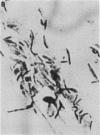Abstract
The activity of antimicrobial agents against Fusobacterium species has been reported as variable in the literature. For some strains, the inconsistency arises from difficulty in determining the endpoint of growth in agar dilution susceptibility tests. Certain strains persist as a subtle haze beyond the levels of antibiotic that permit conventional colonial growth. We have determined by light and electron microscopy that this haze represents the colonial growth of cell-wall-defective (CWD) variants of the parent Fusobacterium. The CWD forms could be propagated indefinitely in hypertonic medium containing the antibiotic inducing agent. However, when the antibiotic was eliminated, the organisms would revert to their native morphology. Formation of CWD variants was observed in the presence of cell-wall-active drugs (e.g., beta-lactam agents) but not with drugs that work by a different mechanism (e.g., clindamycin or chloramphenicol). Fourteen of 22 F. varium strains, 8 of 11 F. mortiferum strains, 2 of 10 F. gonidiaformans strains, and 1 of 4 of F. necrophorum strains could be induced to a CWD form in vitro in the usual agar dilution susceptibility test. Although the clinical significance of CWD variants of Fusobacterium is unknown, they may be a source of confusion in interpreting agar dilution susceptibility tests.
Full text
PDF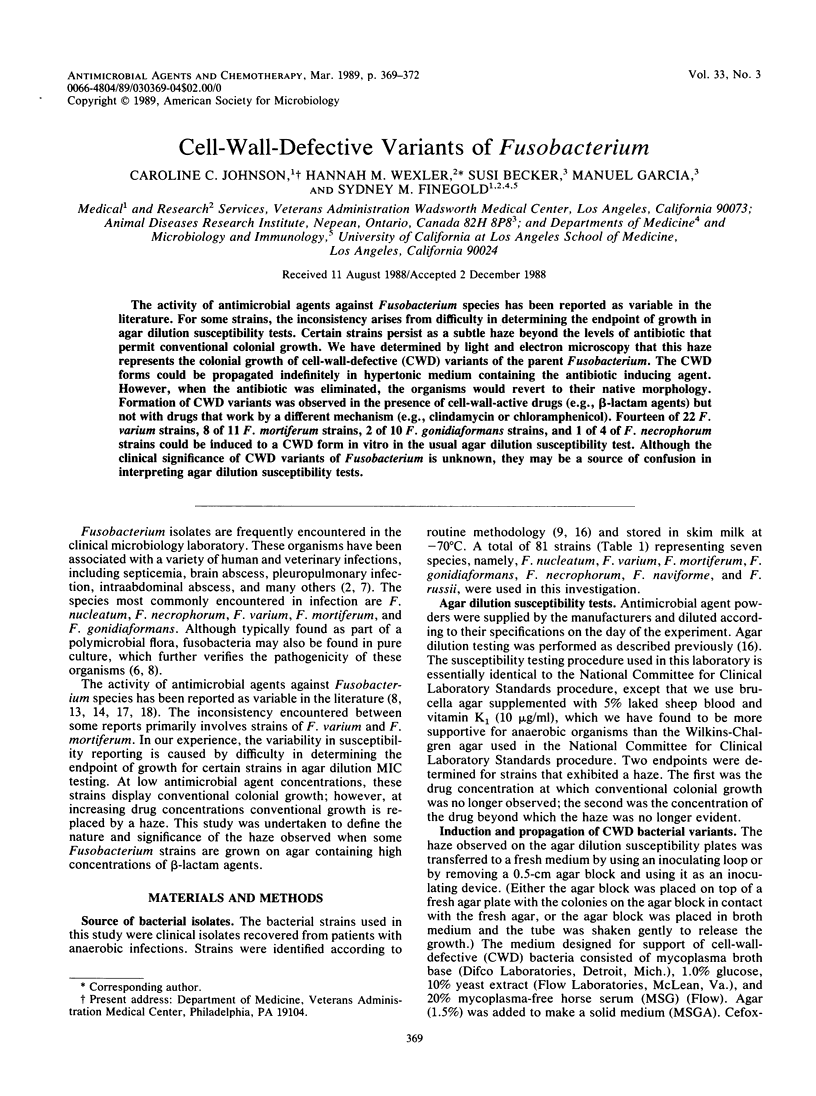
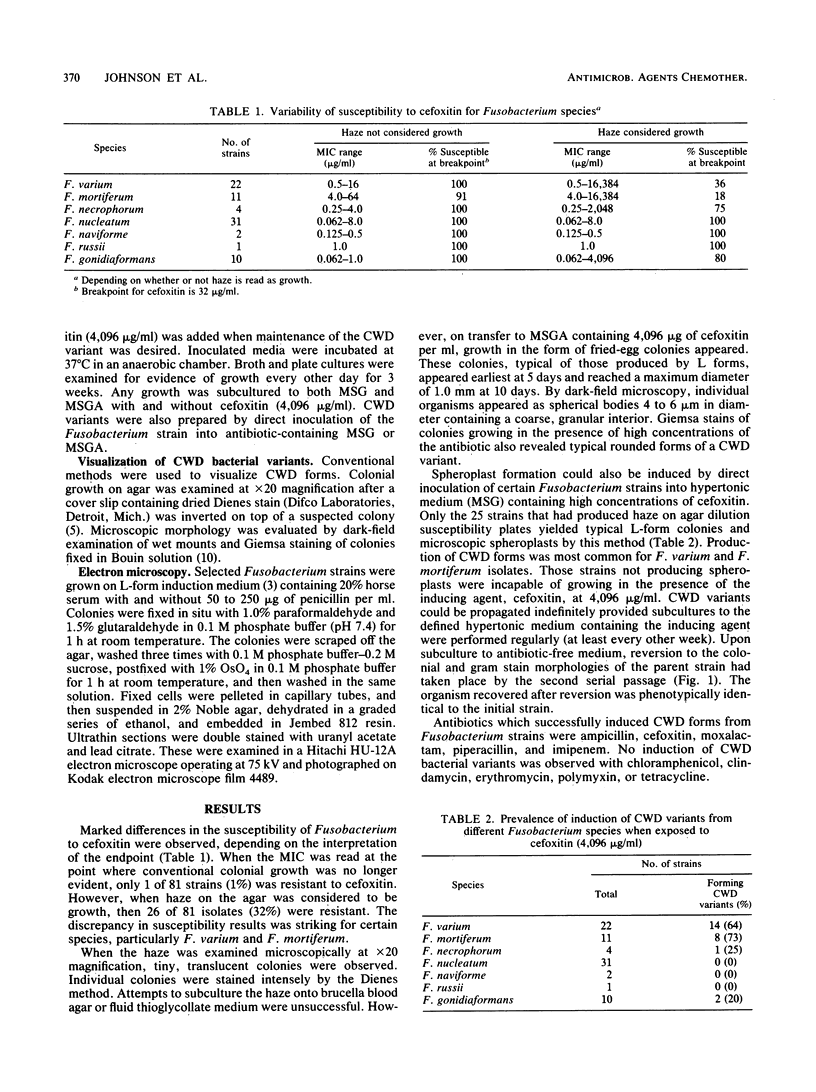
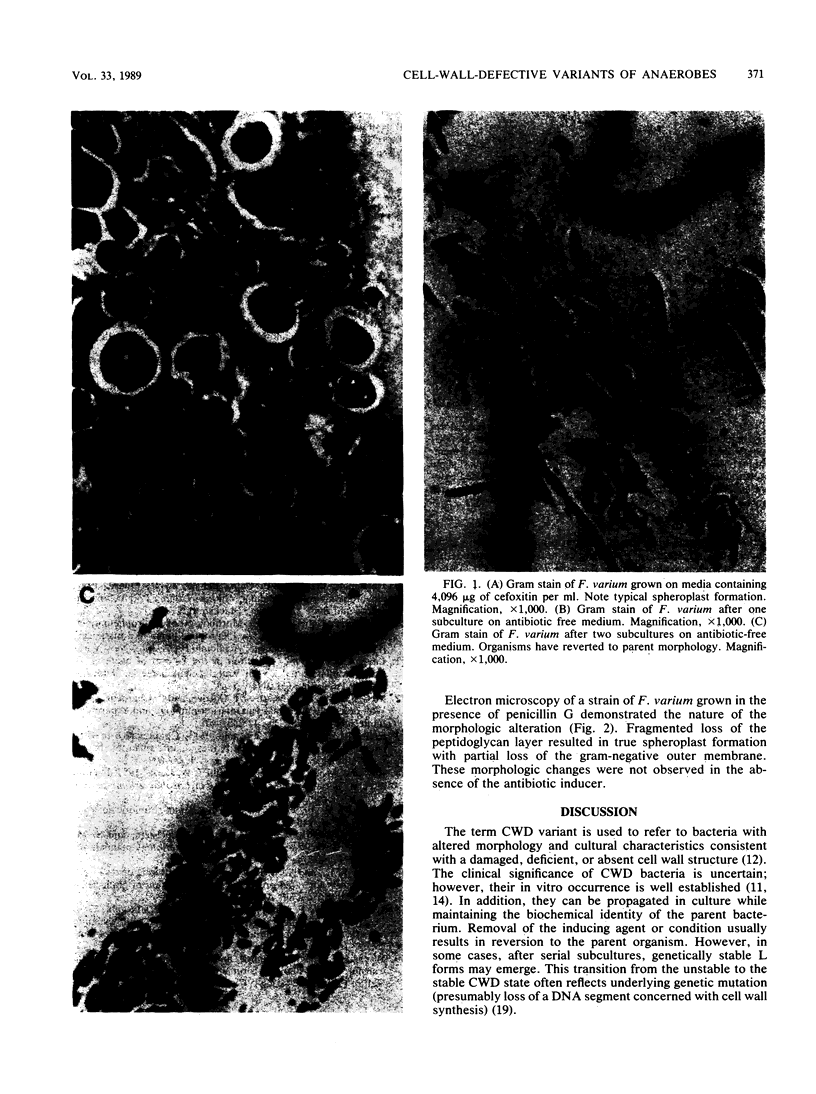
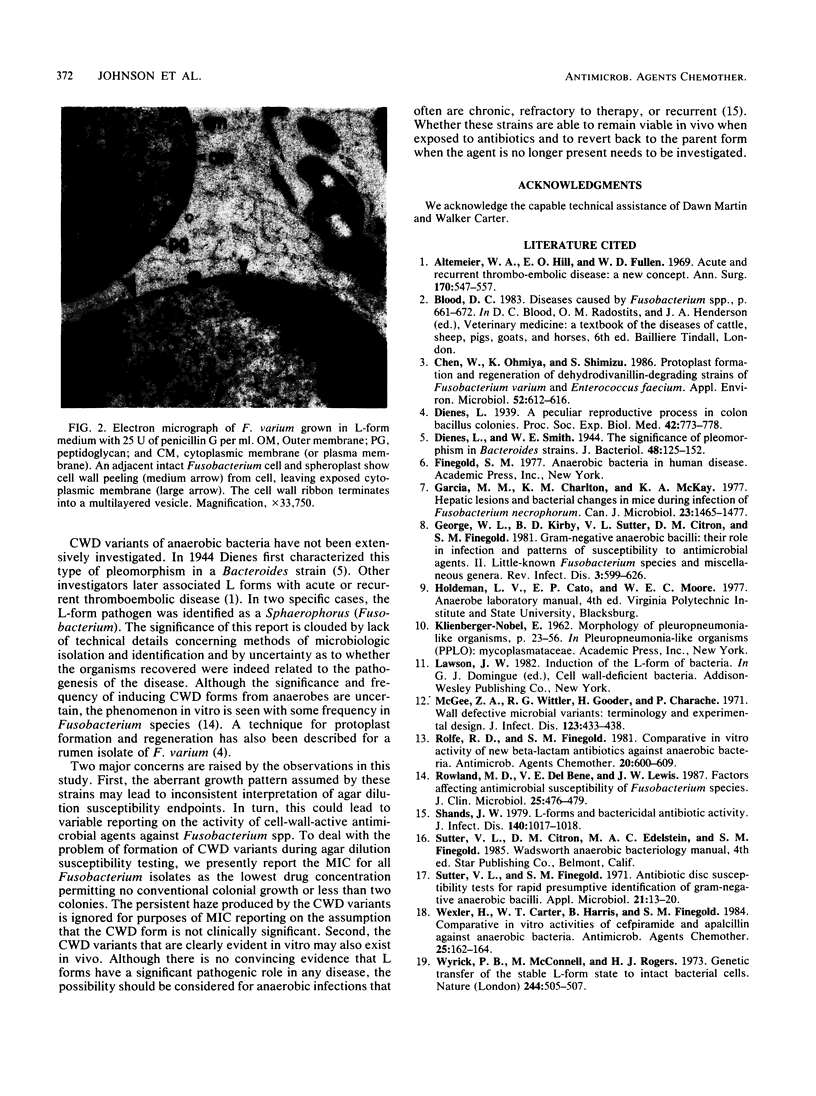
Images in this article
Selected References
These references are in PubMed. This may not be the complete list of references from this article.
- Altemeier W. A., Hill E. O., Fullen W. D. Acute and recurrent thromboembolic disease: a new concept of etiology. Ann Surg. 1969 Oct;170(4):547–558. doi: 10.1097/00000658-196910000-00006. [DOI] [PMC free article] [PubMed] [Google Scholar]
- Chen W., Ohmiya K., Shimizu S. Protoplast formation and regeneration of dehydrodivanillin-degrading strains of Fusobacterium varium and Enterococcus faecium. Appl Environ Microbiol. 1986 Oct;52(4):612–616. doi: 10.1128/aem.52.4.612-616.1986. [DOI] [PMC free article] [PubMed] [Google Scholar]
- Dienes L., Smith W. E. The Significance of Pleomorphism in Bacteroides Strains. J Bacteriol. 1944 Aug;48(2):125–153. doi: 10.1128/jb.48.2.125-153.1944. [DOI] [PMC free article] [PubMed] [Google Scholar]
- Garcia M. M., Charlton K. M., McKay K. A. Hepatic lesions and bacterial changes in mice during infection of Fusobacterium necrophorum. Can J Microbiol. 1977 Oct;23(10):1465–1477. doi: 10.1139/m77-215. [DOI] [PubMed] [Google Scholar]
- George W. L., Kirby B. D., Sutter V. L., Citron D. M., Finegold S. M. Gram-negative anaerobic bacilli: Their role in infection and patterns of susceptibility to antimicrobial agents. II. Little-known Fusobacterium species and miscellaneous genera. Rev Infect Dis. 1981 May-Jun;3(3):599–626. doi: 10.1093/clinids/3.3.599. [DOI] [PubMed] [Google Scholar]
- McGee Z. A., Wittler R. G., Gooder H., Charache P. Wall-defective microbial variants: terminology and experimental design. J Infect Dis. 1971 Apr;123(4):433–438. doi: 10.1093/infdis/123.4.433. [DOI] [PubMed] [Google Scholar]
- Rolfe R. D., Finegold S. M. Comparative in vitro activity of new beta-lactam antibiotics against anaerobic bacteria. Antimicrob Agents Chemother. 1981 Nov;20(5):600–609. doi: 10.1128/aac.20.5.600. [DOI] [PMC free article] [PubMed] [Google Scholar]
- Rowland M. D., Del Bene V. E., Lewis J. W. Factors affecting antimicrobial susceptibility of Fusobacterium species. J Clin Microbiol. 1987 Mar;25(3):476–479. doi: 10.1128/jcm.25.3.476-479.1987. [DOI] [PMC free article] [PubMed] [Google Scholar]
- Shands J. W., Jr L forms and bactericidal antibiotic activity. J Infect Dis. 1979 Dec;140(6):1017–1019. doi: 10.1093/infdis/140.6.1017. [DOI] [PubMed] [Google Scholar]
- Sutter V. L., Finegold S. M. Antibiotic disc susceptibility tests for rapid presumptive identification of Gram-negative anaerobic bacilli. Appl Microbiol. 1971 Jan;21(1):13–20. doi: 10.1128/am.21.1.13-20.1971. [DOI] [PMC free article] [PubMed] [Google Scholar]
- Wexler H., Carter W. T., Harris B., Finegold S. M. Comparative in vitro activities of cefpiramide and apalcillin against anaerobic bacteria. Antimicrob Agents Chemother. 1984 Feb;25(2):162–164. doi: 10.1128/aac.25.2.162. [DOI] [PMC free article] [PubMed] [Google Scholar]
- Wyrick P. B., McConnell M., Rogers H. J. Genetic transfer of the stable L form state to intact bacterial cells. Nature. 1973 Aug 24;244(5417):505–507. doi: 10.1038/244505a0. [DOI] [PubMed] [Google Scholar]



